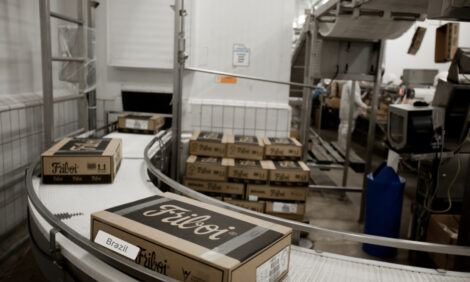



QMS: Cattle Supplies Tight Both in UK and Ireland
UK & IRELAND - Prime cattle prices continue to be driven by a tight supply of cattle in both the UK and Ireland, according to Stuart Ashworth, Quality Meat Scotland’s Head of Economics Services.The latest slaughter information shows that during May Scottish abattoirs handled six per cent fewer cattle than last year and estimates of auction market throughputs suggest that this level of reduction in supply has continued through June. In Ireland prime cattle slaughterings have been almost 20 per cent lower than last year in May and June.
“With Scottish prices some 12 per cent higher than this time last year the demand for beef is clearly the stronger element in the current supply and demand equation,” said Mr Ashworth.
“Producers and processors are both watching the market with interest - producers in the hope that current prices can be maintained and processors in the hope that they begin to ease. Ultimately supply and demand will win the day.”
Mr Ashworth said that it is likely the “Olympic effect” on beef demand has now passed in that, with four weeks to go, most food suppliers at the Olympics are likely to have secured their supplies.
“Aside from the Olympics, however, a spell of improved weather would be welcome to stimulate barbecue demand, as would an improvement in consumer confidence in the wider UK and European economy,” he observed.
Looking towards late summer and early autumn, changes in cattle availability rather than demand is likely to become the bigger driver of prices. Scottish calf registration information showed an increase in 2010 over 2009 and a further increase in 2011 over 2010. However, slaughter numbers so far this year have been lower than the calf registrations suggest they should be, Mr Ashworth commented.
“A closer look at slaughter volumes reveals some interesting differences. While the overall Scottish prime kill has fallen nine per cent over the first five months of the year, the biggest change has been in young bulls, which are down 30 per cent followed by heifers down 10 per cent while steer numbers have only fallen six per cent. Young bull numbers reflect the decline in dairy bull calf registrations in 2010 and early 2011, however dairy bull calf registrations started to increase in the second half of 2011,” he said.
The decline in heifer slaughterings, which has gathered pace during the year to stand at 13 per cent during May, may hold out the prospect of increased breeding retentions and continued lower availability of heifers for slaughter, said Mr Ashworth.
Abattoirs in England and Wales have also seen a similar pattern of decline in prime stock numbers over the first five months of the year although the falls have not been quite as large as in Scotland. However, in contrast to Scotland, cow slaughterings have also declined.
“On the evidence of calf registrations, census results and recent slaughter volumes, it seems likely that across the UK as a whole there are slightly more prime stock in the supply chain than this time last year.
“A similar scenario is building in Ireland with their December census showing an increase of 10 per cent in cattle under one year old. This does not rest easily with the substantial decline in prime stock slaughterings so far this year or the decline in Irish live cattle exports.”
One unanswered question, Mr Ashworth pointed out, is the extent to which the miserable summer weather has impacted on livestock growth rates at grass and delayed the arrival of these cattle to the market.
“While there may be some short term increase in cattle supplies this must be put in the context of 2011 calf registrations which were no better than they were in 2008 and nine per cent below their 2004 levels. Hence taking a longer term view the market looks set to remain tightly supplied.”
TheCattleSite News Desk


